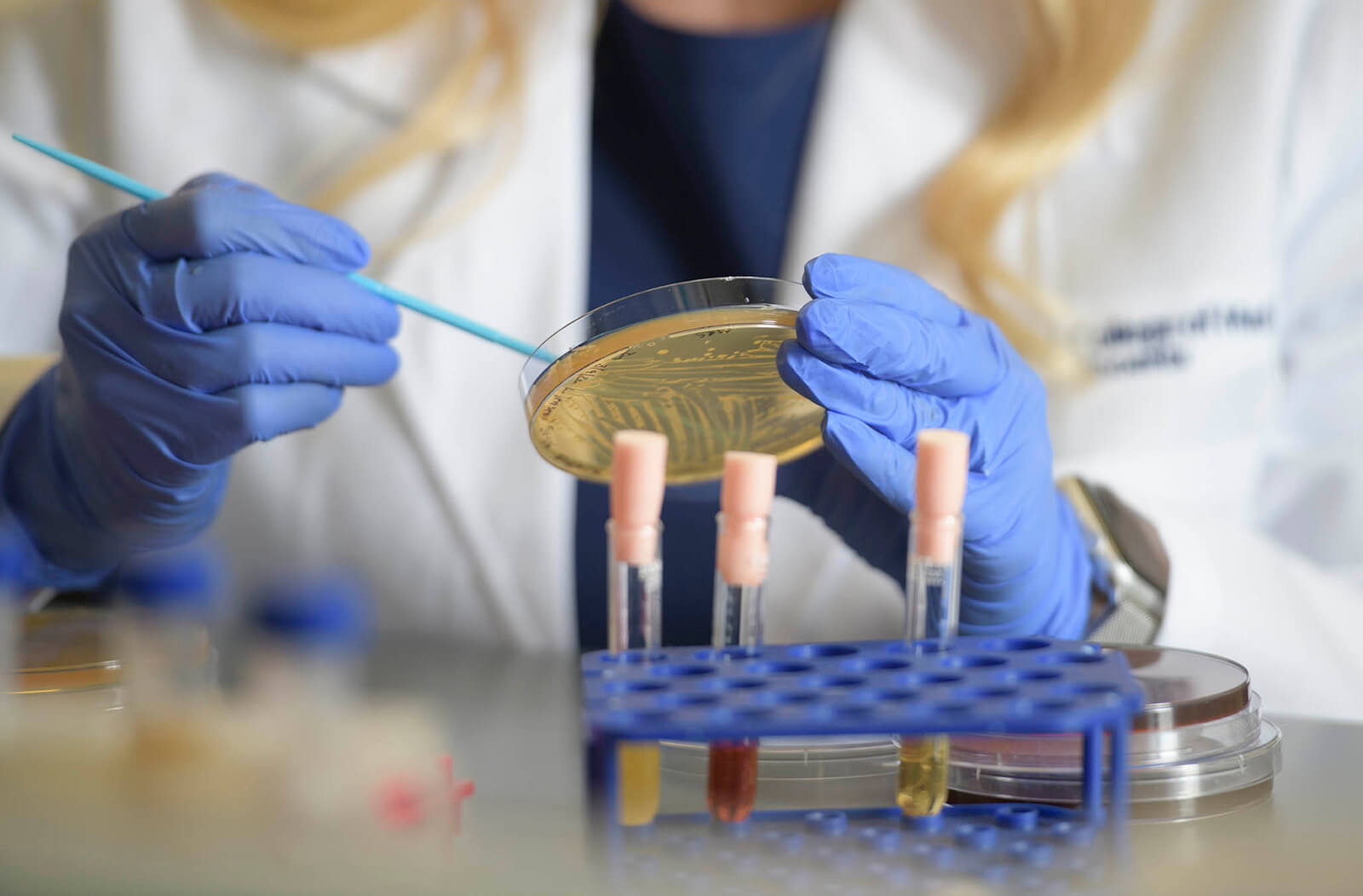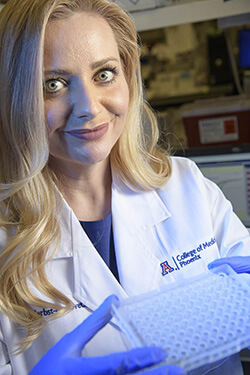
Bacteria Are Key to Vaginal Health, U of A Health Sciences Researchers Say

Bacterial vaginosis is the most common and recurrent gynecological condition affecting nearly 30 percent of women between the ages of 15 and 44, according to the U.S. Centers for Disease Control and Prevention. A University of Arizona Health Sciences-led study recently identified a specific bacteria family and uncovered how it contributes to bacterial vaginosis, paving the way for new insights into disease prevention and treatment.
Led by Melissa Herbst-Kralovetz, PhD, a member of the BIO5 Institute and associate professor of Basic Medical Sciences and Obstetrics and Gynecology at the College of Medicine – Phoenix, researchers found that members of the Veillonellaceae bacteria family contribute to an increase inflammation and cell death, and alter the acidity of the cervical microenvironment. These changes support bacterial vaginosis and create favorable conditions for subsequent gynecological diseases, such as sexually transmitted infections and cancer.

The paper, “Veillonellaceae family members uniquely alter the cervical metabolic microenvironment in a human three-dimensional epithelial model,” published on July 6 in the journal npj Biofilms and Microbiomes, found that Veillonellaceae family members contribute to disease by altering inflammation and metabolism in the cervicovaginal region.
The female reproductive tract is typically colonized by bacteria that promote health, such as Lactobacillus. While these bacteria are considered friendly, an imbalance can lead to the creation of a biofilm — a consortium of many different harmful microbes — that promotes disease.
Last year, Dr. Herbst-Kralovetz and colleagues described a hypothetical model in which the interactions between microbes and human cells alter the vaginal microenvironment and ultimately influence the balance between health and disease. This study is the first to define a definitive role for this bacterial family in bacterial vaginosis.
Using a 3D human model, Dr. Herbst-Kralovetz’s group evaluated the effects of three bacterium — Veillonella atypica, Veillonella montpellierensis, and Megasphaera micronuciformis — on the cervical microenvironment.
They found that two species — V. atypica and V. montpellierensis — decreased lactate, an acid typically produced by beneficial bacteria that provides protection from harmful infections. These two species also increased substances that play a role in bacterial vaginosis-associated vaginal odor.
They also found that M. micronuciformis further drives disease progression by increasing inflammation and promoting cell death through the production of certain fat molecules.
Insights from this study lay the foundation for polymicrobial, or “multi-bug” studies, which can determine the complex interaction effects of multiple bacterial species on female reproductive health.
“Using this study and our 3D model as a foundation, we hope to determine if and how other species are altering the environment to contribute to bacterial vaginosis,” Dr. Herbst-Kralovetz said. “We have found that different species have distinct contributions, so we also hope to categorize a variety of bacterial vaginosis-associated microbes based on their unique effects on the female reproductive tract.”
Ultimately, Dr. Herbst-Kralotetz says this study and others like it can help to inform treatment and intervention strategies.
“It is important to know who the major players are, but also how they’re influencing physiological processes and disease, so we can develop targeted strategies to treat bacterial vaginosis and prevent subsequent gynecological infections and cancer,” she said.
Dr. Herbst-Kralovatz’s co-authors from the College of Medicine – Phoenix are Dr. Jason Maarsingh, a postdoctoral research assistant in Obstetrics and Gynecology, and Dr. Pawel Laniewski, an assistant research scientist in Basic Medical Sciences. Other co-authors include undergraduate student Camryn Garza and Mary Salliss, who participated in the Bath University Placement/Exchange Program.
The story originally appeared on BIO5 Institute's website and was written by Brittany Uhlorn, PhD.
About the College
Founded in 2007, the University of Arizona College of Medicine – Phoenix inspires and trains exemplary physicians, scientists and leaders to advance its core missions in education, research, clinical care and service to communities across Arizona. The college’s strength lies in our collaborations and partnerships with clinical affiliates, community organizations and industry sponsors. With our primary affiliate, Banner Health, we are recognized as the premier academic medical center in Phoenix. As an anchor institution of the Phoenix Bioscience Core, the college is home to signature research programs in neurosciences, cardiopulmonary diseases, immunology, informatics and metabolism. These focus areas uniquely position us to drive biomedical research and bolster economic development in the region.
As an urban institution with strong roots in rural and tribal health, the college has graduated more than 1,000 physicians and matriculates 130 students each year. Greater than 60% of matriculating students are from Arizona and many continue training at our GME sponsored residency programs, ultimately pursuing local academic and community-based opportunities. While our traditional four-year program continues to thrive, we will launch our recently approved accelerated three-year medical student curriculum with exclusive focus on primary care. This program is designed to further enhance workforce retention needs across Arizona.
The college has embarked on our strategic plan for 2025 to 2030. Learn more.